Three thrones, four centuries: ‘This Island Sunrise’ at Sadie Coles HQ
‘This Island Sunrise’ celebrates improvised British design at Sadie Coles HQ, London (until 24 September 2023)
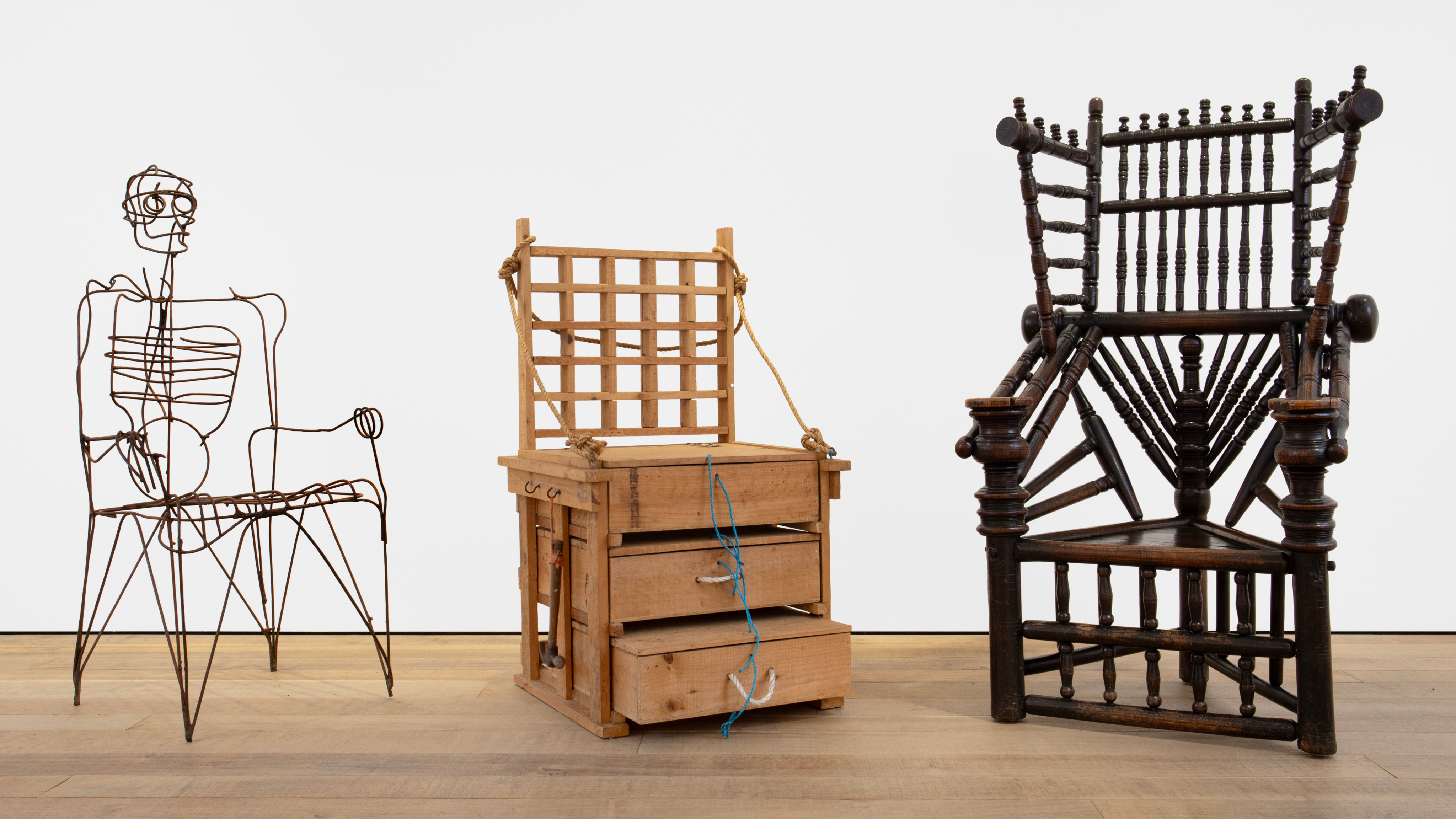
When stumbling upon an antiques shop, it is always fun to have a rummage to explore what treasure you may find. Such unexpected encounters with overlooked craftsmanship are recalled in this exhibition of thrones – each at one time discarded or unwanted, and now given fresh perspective by curator Simon Andrews in ‘This Island Sunrise’ at Sadie Coles HQ in London, coinciding with London Design Festival 2023.
Time to take a seat (or two) at Sadie Coles HQ
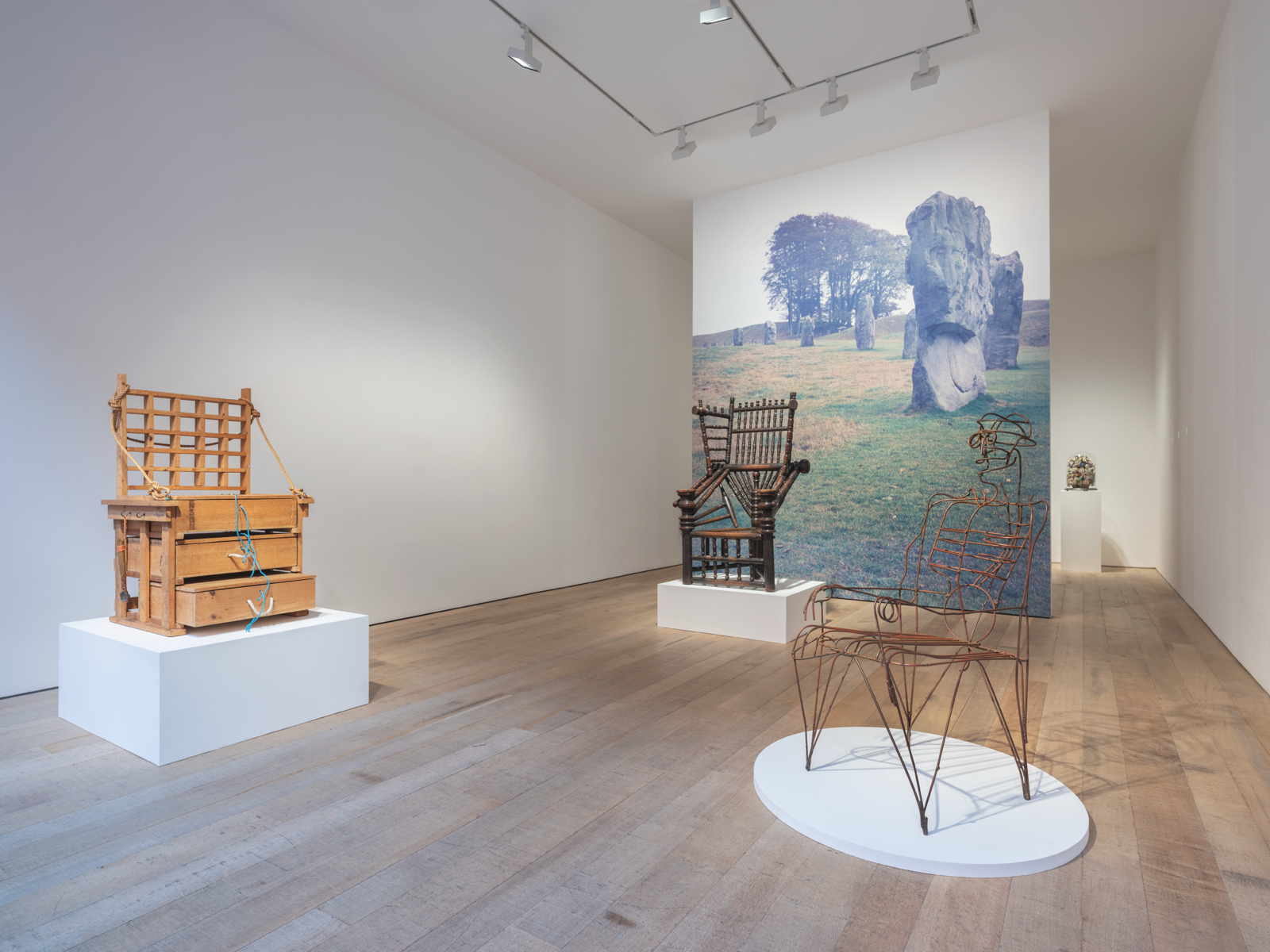
Installation view, ‘This Island Sunrise’, curated by Simon Andrews, Sadie Coles HQ, London
Three thrones stand tall as the focus of the exhibition, among other objects and artefacts. Though separated by centuries in their creation, each throne shares a similarity in being constructed out of modest or discarded materials to establish something beautiful, demonstrating its artist’s capabilities.
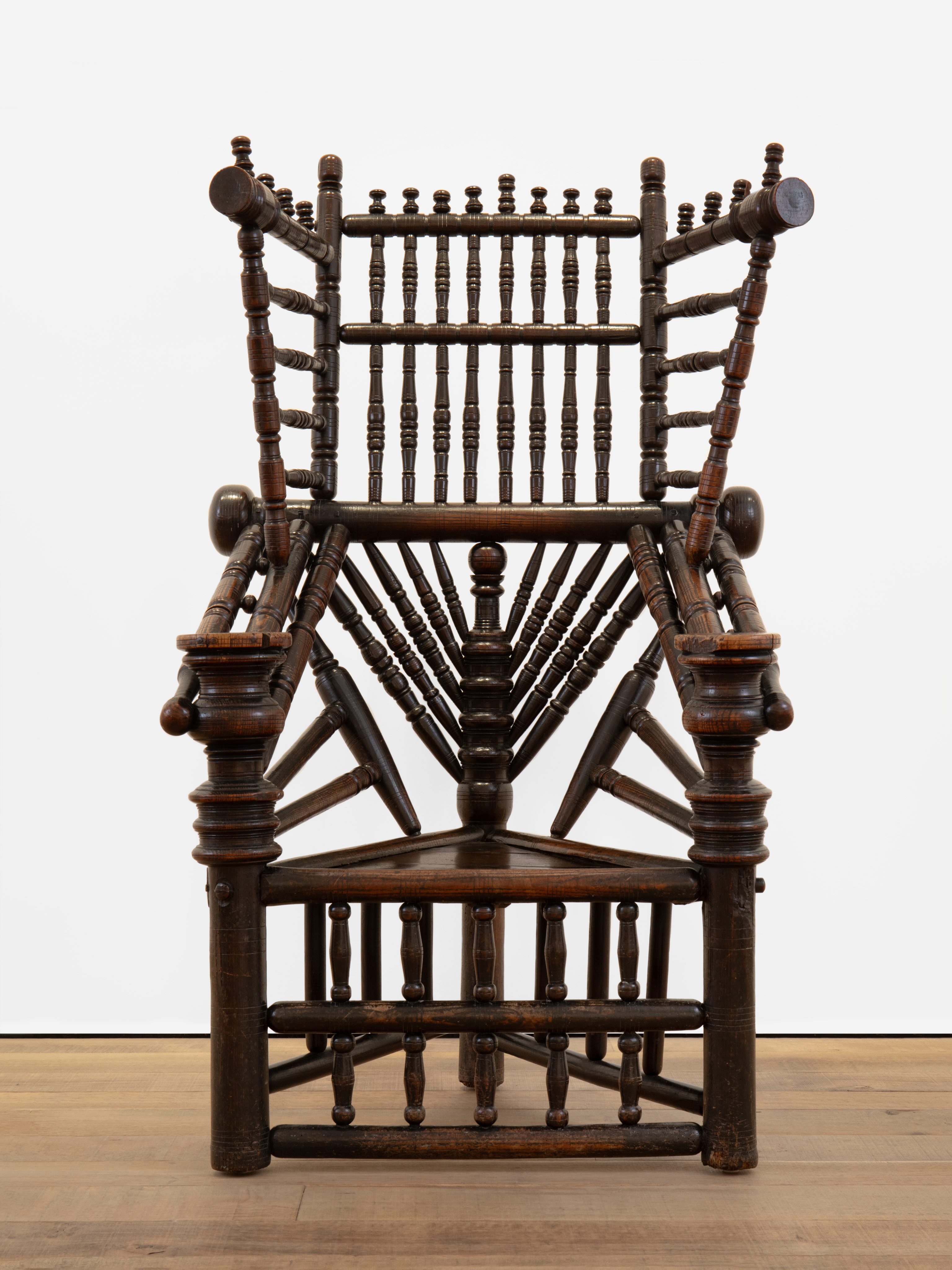
English or Welsh Turner’s Throne, c. 1640 turned ash and fruitwood, oak boards unique 56 x 32 x 29 inches (142 x 80 x 73.5 cm)
Surprisingly, two of the thrones are inspired by the design and complexity of the skeletal system. The first, Turner’s Throne (c.1640), is an insight into the origins of how a throne was, and still is, viewed in history, as a symbol of power and authority. The unnamed creator would have used Britain’s forest to source ash, oak and walnut to hand-build this uniquely crafted throne.
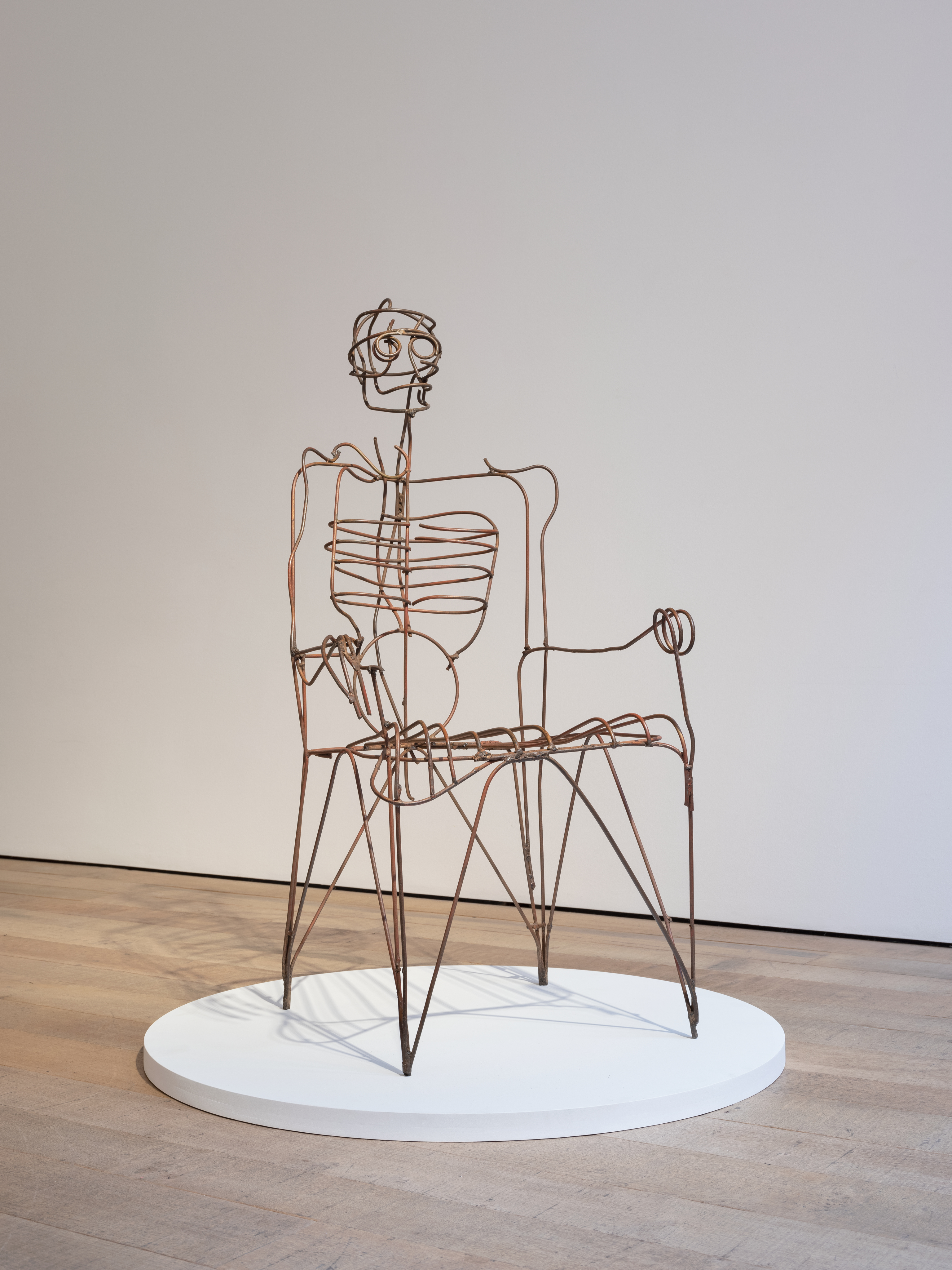
Tom Dixon’s Skeleton Throne (1985). Installation view, ‘This Island Sunrise’, curated by Simon Andrews, Sadie Coles HQ, London
Centuries later, and through a more modern perspective, Tom Dixon’s Skeleton Throne (1985) tells a socio-political story. Dixon’s design is almost satirical in its use of discarded iron, a material on which Britain once built her empire, to create the pirate-eque skeleton that went down with the ship. As we face the aftermath of industrialisation and its dire impact on climate, the sentiment resonates.
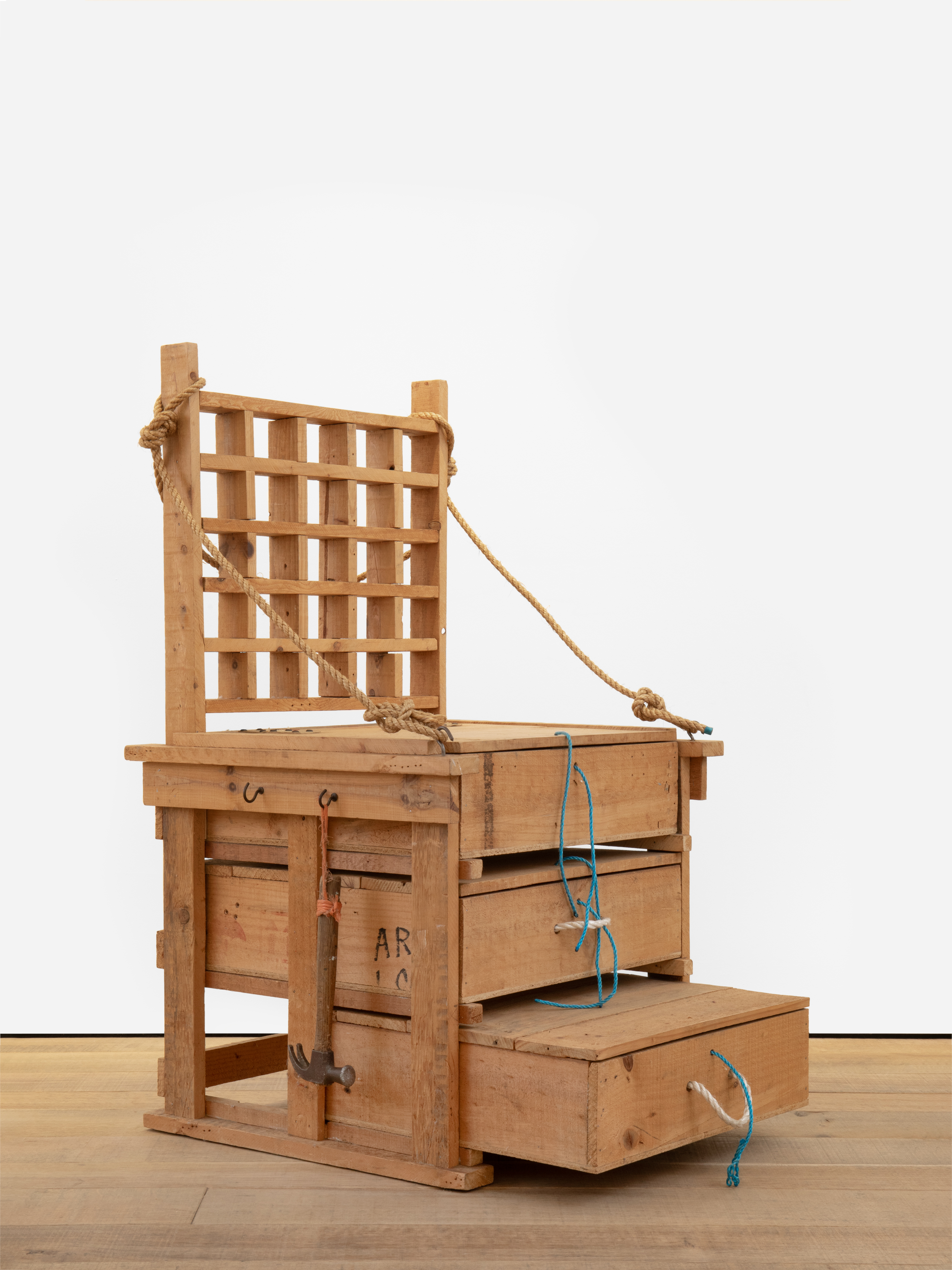
Eduardo Paolozzi, Sculptor’s Chair, 1985-1987, salvaged and repurposed materials including pine, beech, rope, linen, nylon cord, metal hooks and nails, together with a hammer
The final throne of the collection is one from Eduardo Paolozzi, who came across abandoned crates and other materials outside Zeev Aram’s Covent Garden showroom. Sculptor’s Chair (1985-1987) is for, in Paolozzi’s words: ‘the sculptor, after a lifetime of improvising, reaching for his tools’. The shallow box, hammer marks, knots and nails are additional details that nod to the creative mind and process of a sculptor.
Each throne offers a unique interpretation of British history and culture, brought together by design and identity.
'This Island Sunrise' at Sadie Coles HQ is on view until 24 September 2023
Wallpaper* Newsletter
Receive our daily digest of inspiration, escapism and design stories from around the world direct to your inbox.
Tianna Williams is Wallpaper*s staff writer. Before joining the team in 2023, she contributed to BBC Wales, SurfGirl Magazine, Parisian Vibe, The Rakish Gent, and Country Life, with work spanning from social media content creation to editorial. When she isn’t writing extensively across varying content pillars ranging from design, and architecture to travel, and art, she also helps put together the daily newsletter. She enjoys speaking to emerging artists, designers, and architects, writing about gorgeously designed houses and restaurants, and day-dreaming about her next travel destination.
-
 All-In is the Paris-based label making full-force fashion for main character dressing
All-In is the Paris-based label making full-force fashion for main character dressingPart of our monthly Uprising series, Wallpaper* meets Benjamin Barron and Bror August Vestbø of All-In, the LVMH Prize-nominated label which bases its collections on a riotous cast of characters – real and imagined
By Orla Brennan
-
 Maserati joins forces with Giorgetti for a turbo-charged relationship
Maserati joins forces with Giorgetti for a turbo-charged relationshipAnnouncing their marriage during Milan Design Week, the brands unveiled a collection, a car and a long term commitment
By Hugo Macdonald
-
 Through an innovative new training program, Poltrona Frau aims to safeguard Italian craft
Through an innovative new training program, Poltrona Frau aims to safeguard Italian craftThe heritage furniture manufacturer is training a new generation of leather artisans
By Cristina Kiran Piotti
-
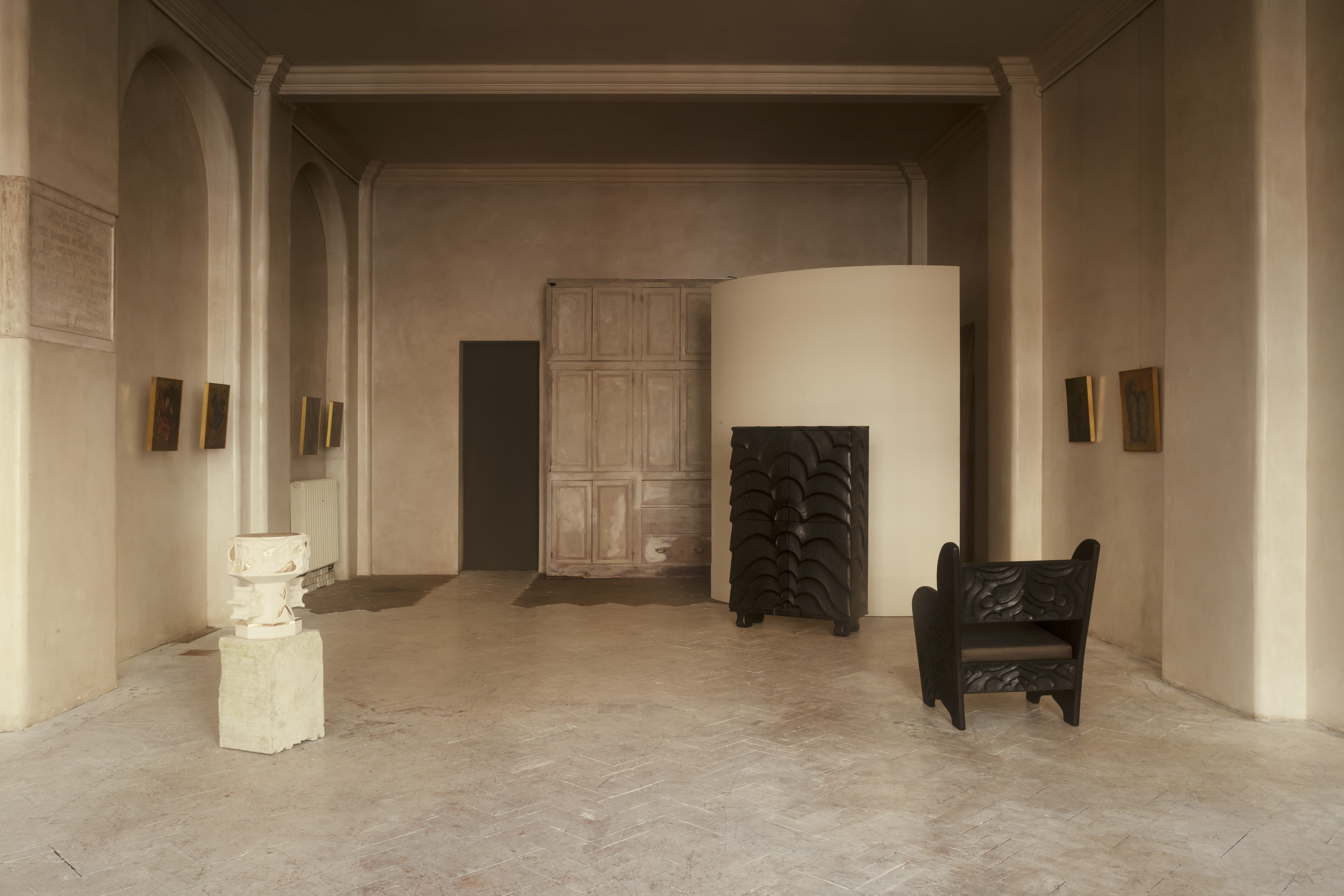 A new London show explores material magic with medieval melancholy
A new London show explores material magic with medieval melancholyInspired by deconsecrated monasteries, interior designer and curator Jermaine Gallacher takes us on a journey through time and mood in a London exhibition at The Ragged School
By Billie Muraben
-
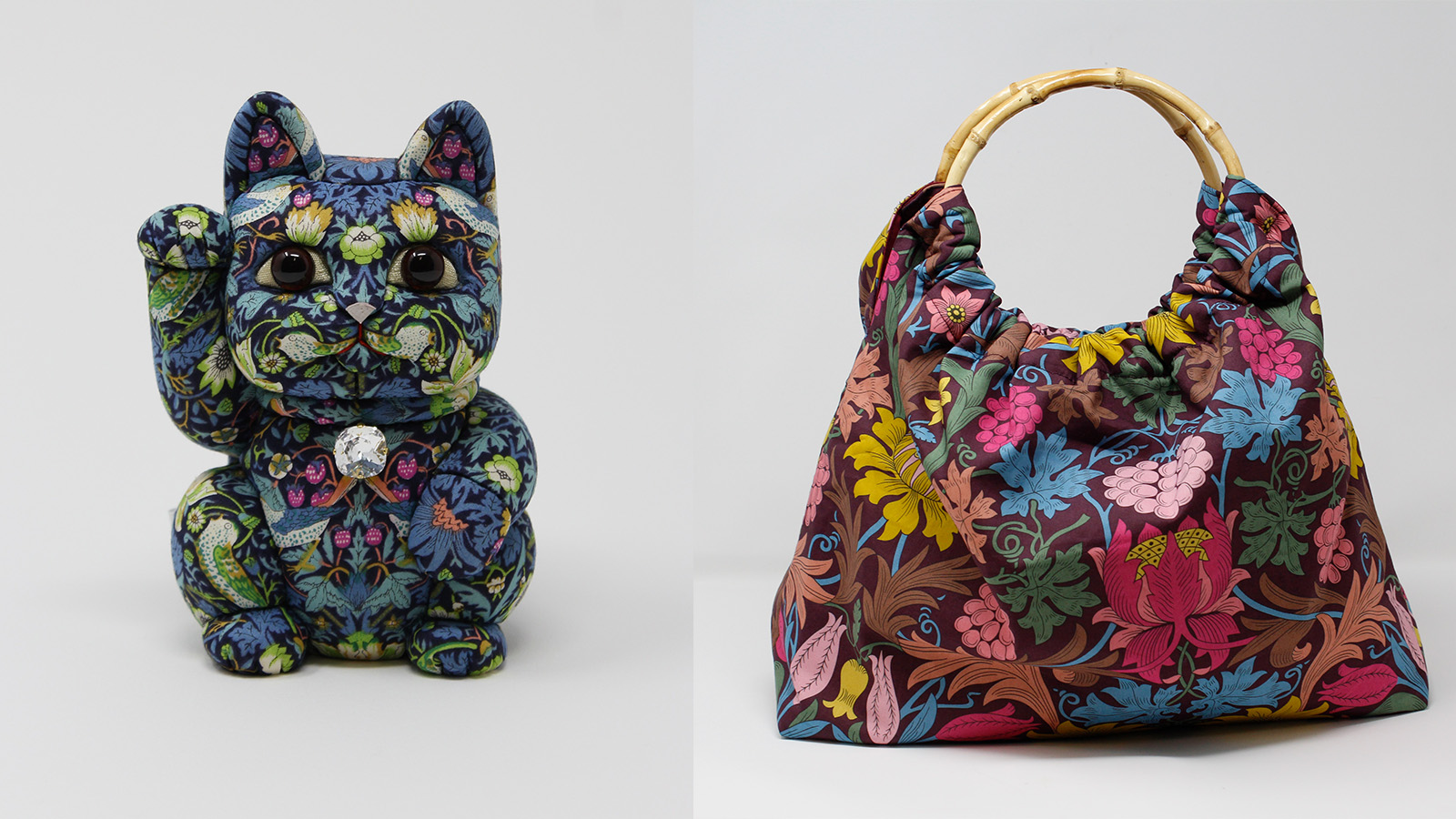 William Morris mania meets the design industry’s darker side in a new London show
William Morris mania meets the design industry’s darker side in a new London show‘Morris Mania’ at the William Morris Gallery explores the British designer’s complicated legacy in an ever-more commodified world
By Tianna Williams
-
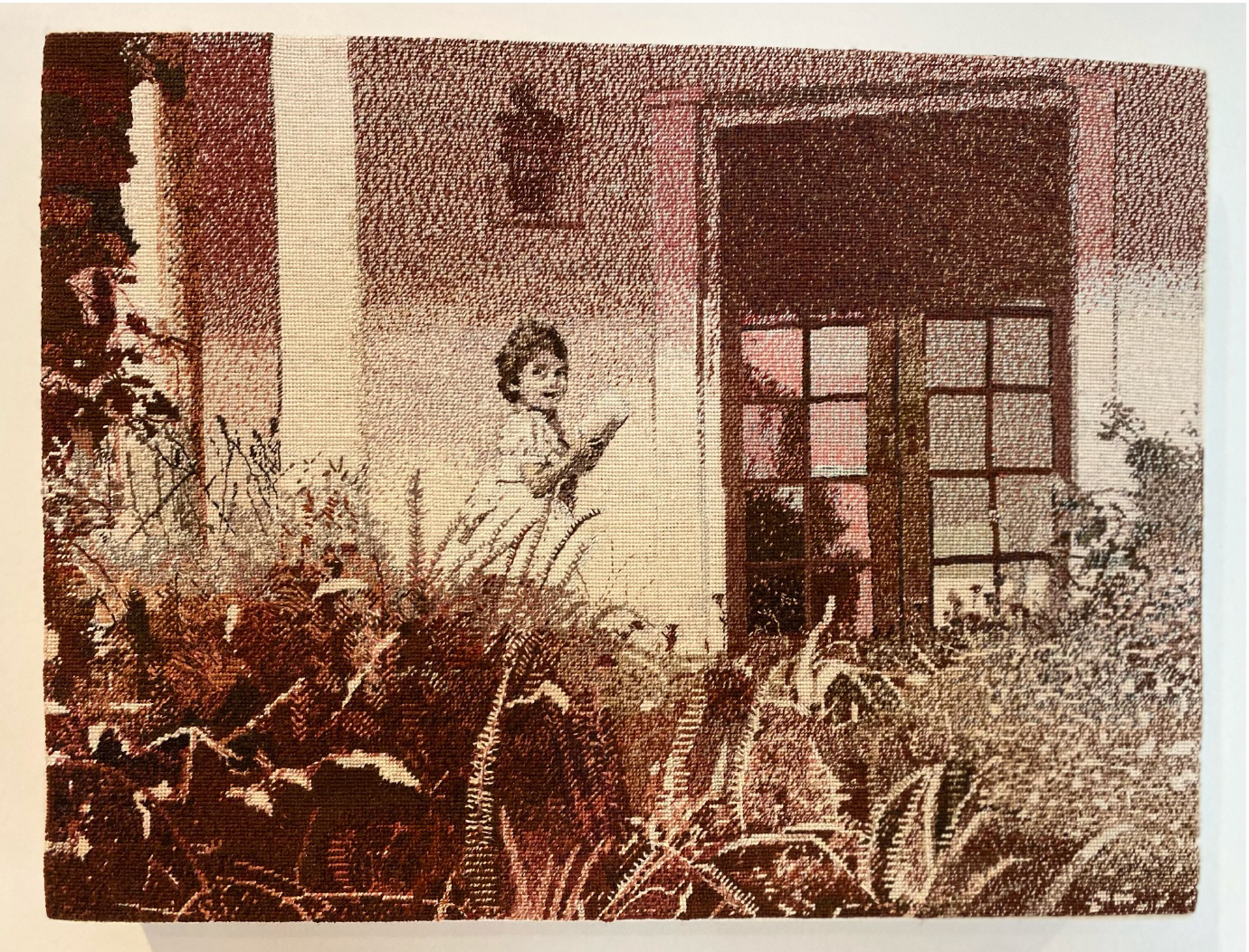 Wallpaper* takes a turn around Somerset House for Collect 2025
Wallpaper* takes a turn around Somerset House for Collect 2025Our round-up of the highlights from the 21st edition of the collectible craft and design fair in London
By Malaika Byng
-
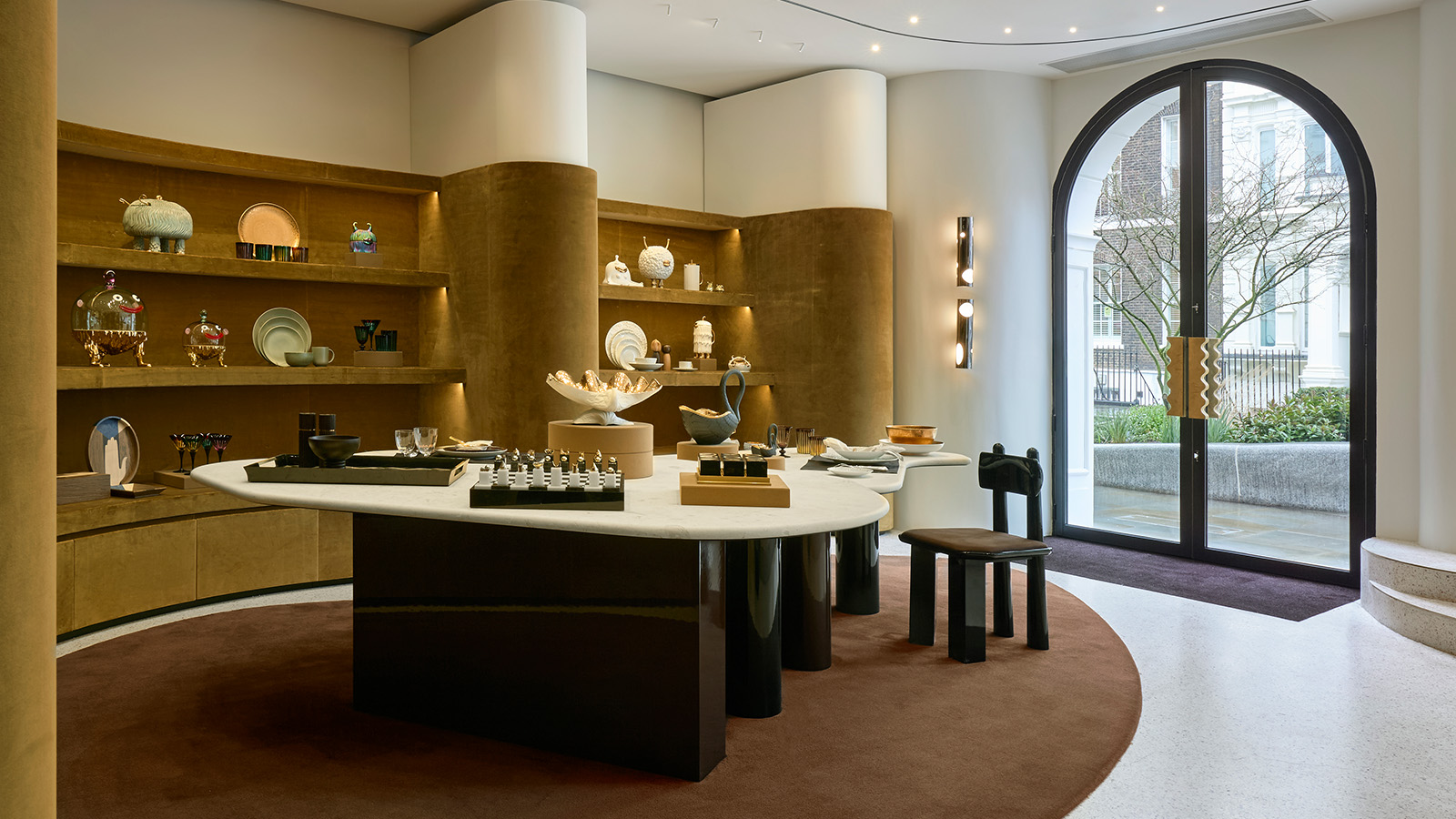 ‘It’s a museum-like jewel box’: L’Objet marks 20 years of elegant design with a new London flagship
‘It’s a museum-like jewel box’: L’Objet marks 20 years of elegant design with a new London flagshipOpening on 12 March 2025, L’Objet’s new London boutique is rich in chocolate colours and velvet detailing
By Tianna Williams
-
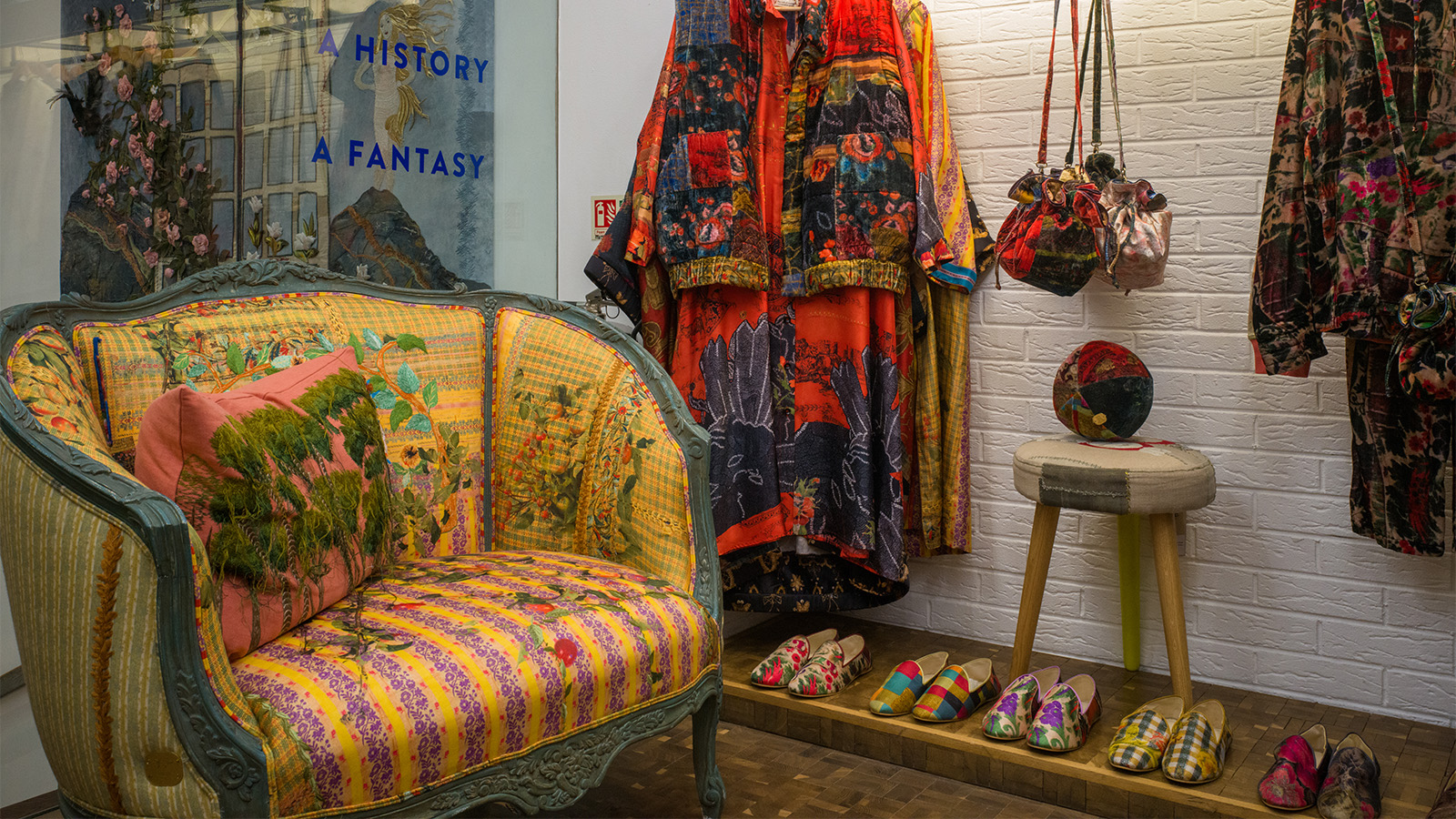 This Beirut design collective threads untold stories into upholstered antique furniture
This Beirut design collective threads untold stories into upholstered antique furnitureBeirut-based Bokja opens a Notting Hill pop-up that's a temple to textiles, from upholstered furniture to embroidered cushions crafted by artisans (until 25 March 2025)
By Tianna Williams
-
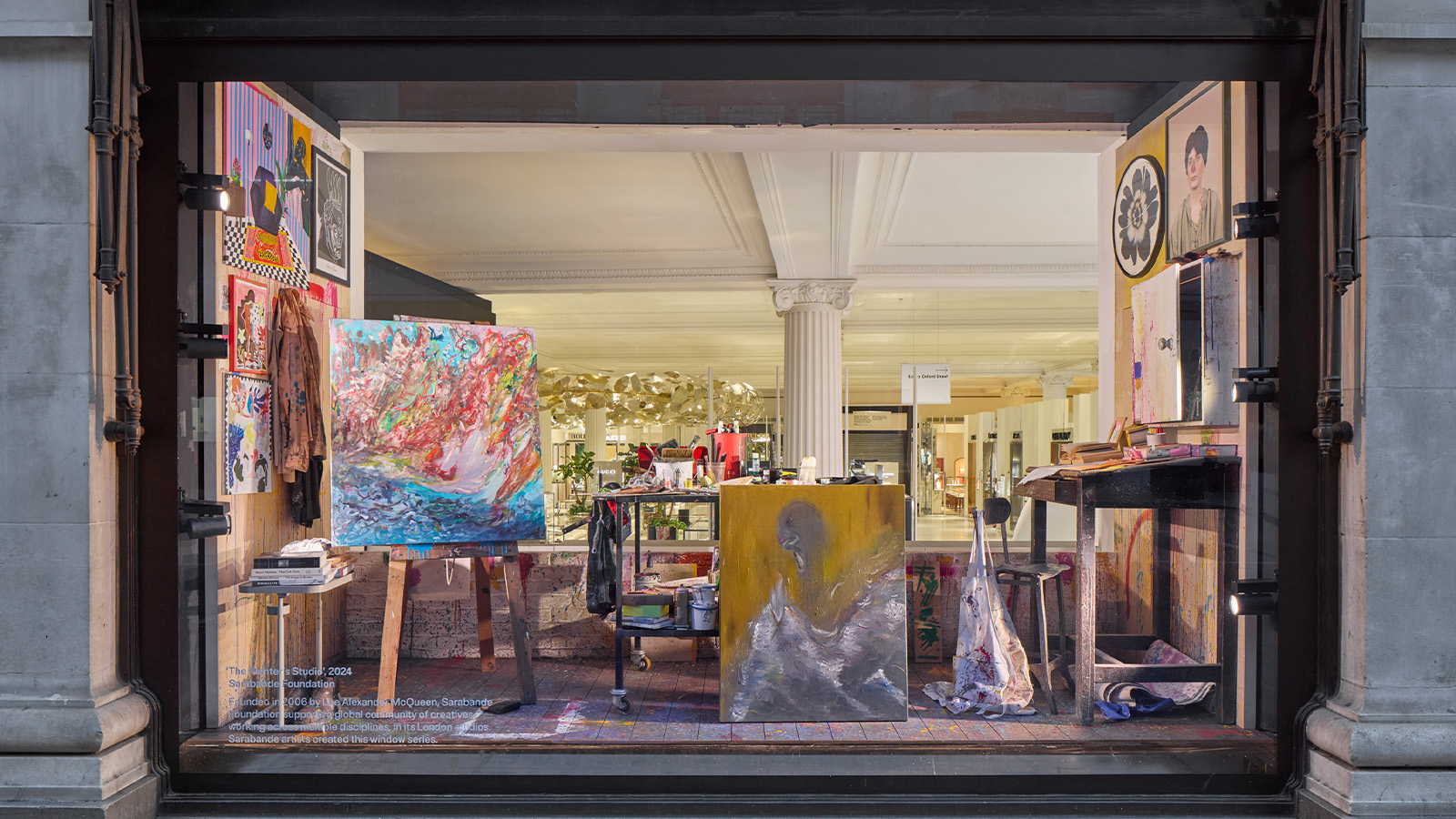 'A creative explosion' in the West End: Sarabande Foundation takes residency at Selfridges
'A creative explosion' in the West End: Sarabande Foundation takes residency at SelfridgesSarabande Foundation's ‘House of Bandits’ takes up residence with gusto in Selfridges for nine weeks
By Hugo Macdonald
-
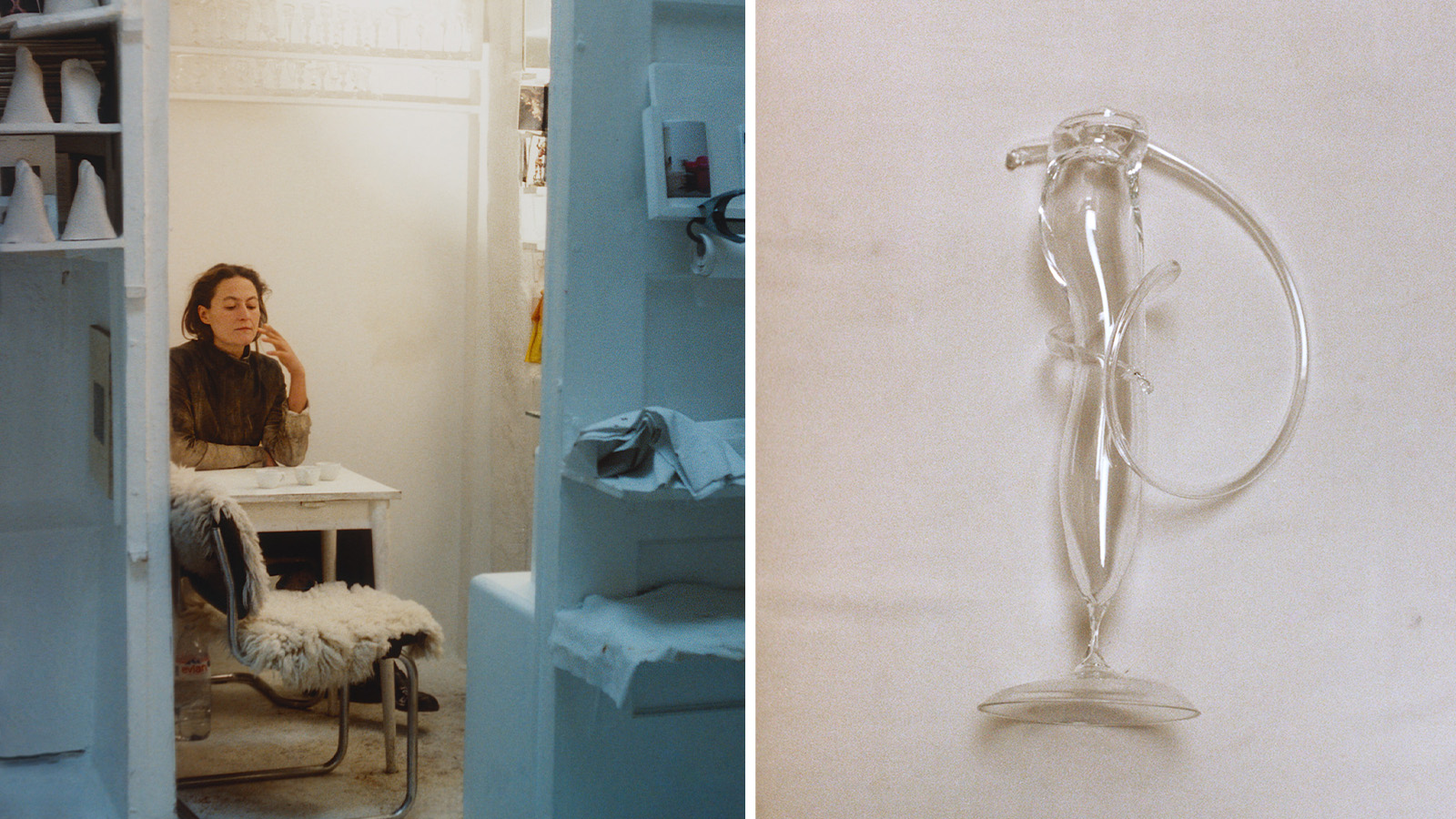 ‘I began experimenting and haven’t really stopped,’ Miranda Keyes on working with glass
‘I began experimenting and haven’t really stopped,’ Miranda Keyes on working with glassIn a rapidly changing world, the route designers take to discover their calling is increasingly circuitous. Here we speak to Miranda Keyes about her forging her own path to success
By Hugo Macdonald
-
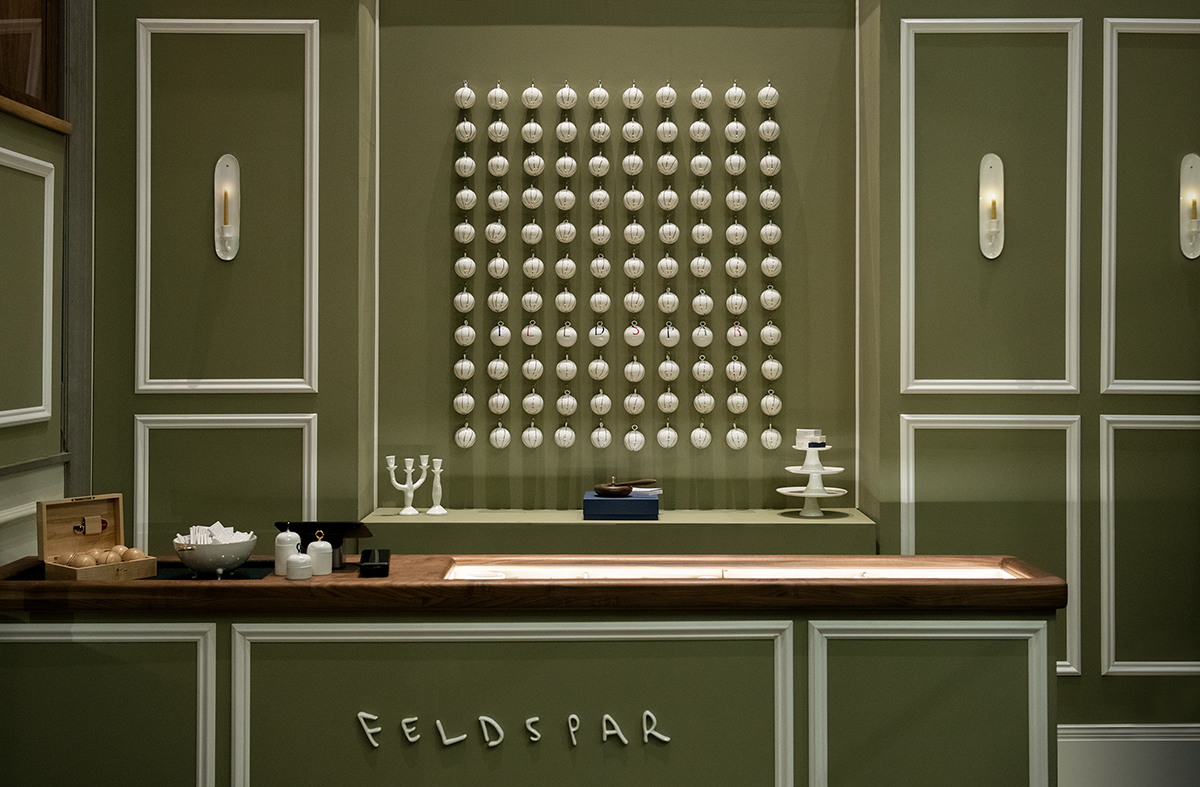 Feldspar makes its mark on Whitehall with a festive pop-up at Corinthia Hotel
Feldspar makes its mark on Whitehall with a festive pop-up at Corinthia HotelDevon-based bone china brand Feldspar makes its first foray into shopkeeping with a pop-up at London’s Corinthia Hotel. Ali Morris speaks with the founders and peeks inside
By Ali Morris